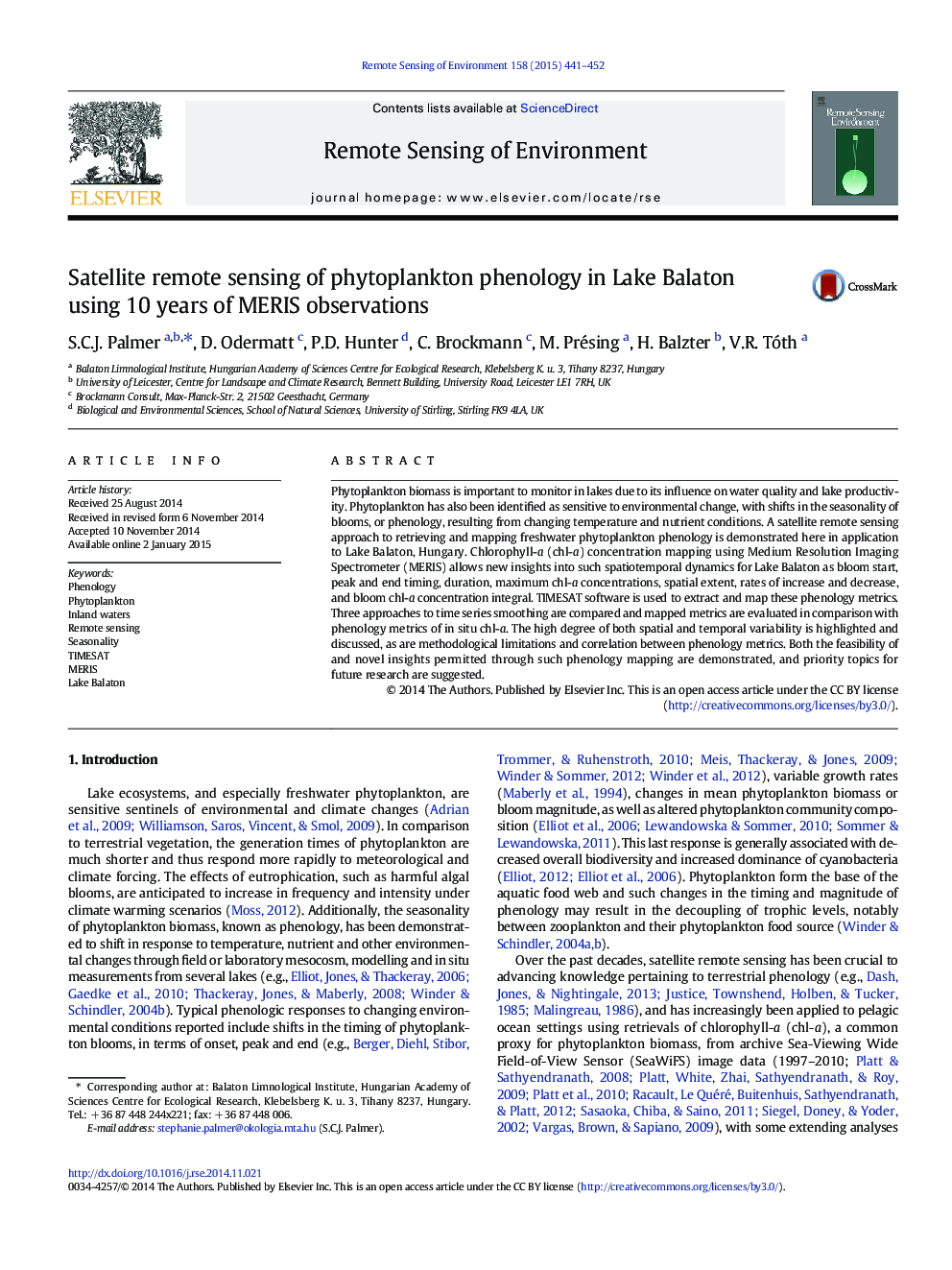| Article ID | Journal | Published Year | Pages | File Type |
|---|---|---|---|---|
| 6346278 | Remote Sensing of Environment | 2015 | 12 Pages |
â¢MERIS satellite imagery used to retrieve phenology of lake phytoplankton blooms.â¢Applied to Lake Balaton, Hungary using TIMESAT software.â¢First known application of TIMESAT in a freshwater setting.â¢All metrics display both high temporal and spatial variability.â¢Implications and important research directions are provided.
Phytoplankton biomass is important to monitor in lakes due to its influence on water quality and lake productivity. Phytoplankton has also been identified as sensitive to environmental change, with shifts in the seasonality of blooms, or phenology, resulting from changing temperature and nutrient conditions. A satellite remote sensing approach to retrieving and mapping freshwater phytoplankton phenology is demonstrated here in application to Lake Balaton, Hungary. Chlorophyll-a (chl-a) concentration mapping using Medium Resolution Imaging Spectrometer (MERIS) allows new insights into such spatiotemporal dynamics for Lake Balaton as bloom start, peak and end timing, duration, maximum chl-a concentrations, spatial extent, rates of increase and decrease, and bloom chl-a concentration integral. TIMESAT software is used to extract and map these phenology metrics. Three approaches to time series smoothing are compared and mapped metrics are evaluated in comparison with phenology metrics of in situ chl-a. The high degree of both spatial and temporal variability is highlighted and discussed, as are methodological limitations and correlation between phenology metrics. Both the feasibility of and novel insights permitted through such phenology mapping are demonstrated, and priority topics for future research are suggested.
